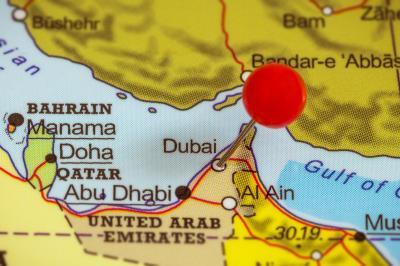Severe weather hit the Arabian Gulf, starting April 14, 2024, most severely affecting Oman and the UAE. Extreme amounts of rain brought by the storms have led to a preliminary insured property loss estimate expected to exceed $650m, which could reach $850m for the UAE.
The Guy Carpenter Cat Resource Center has released an update on the impact of the recent Gulf Floods which occurred between 14-17 April.

The scale of this event is exceptional, Guy Carpenter said, with the National Center of Meteorology announcing the UAE experienced the largest amount of rainfall since 1949, with more than 250 mm in a single day – more than the country’s yearly average rainfall.
In Oman, between April 14 and 16, 2024, up to approximately 180mm of rainfall fell in some of the states of the Sultanate of Oman, according to the National Committee for Emergency Management.
A similar event took place on March 8, 2016, when more than 240 mm of rainfall fell in Dubai in a few hours, the reinsurance broker said.
Up to 259.5 mm (10.2 in) of rain fell on the United Arab Emirates between 14-17 April, the most since records began 75 years ago, causing widespread flooding.
In Dubai in particular the floods had a significant loss impact, with damage to infrastructure, disruption to transportation systems, and economic losses.
The Guy Carpenter Cat Resource Center report states that the preliminary insured property loss estimate from the floods is expected to exceed $650m but could reach $850m for the UAE.
Dubai’s airport, one of the busiest for international travel, saw more than 1,500 flights delayed or cancelled over 3 days.
Insurance penetration in the Middle East remains relatively low, with rates of approximately 1.5% in Saudi Arabia, 1% in Qatar, and 2.75% in the UAE, indicating a significant portion of the population lacks adequate insurance coverage, according to the report.
Most of the properties insured have all-risk policies, which cover most natural perils, Guy Carpenter said.
Motor insurance is mandatory in the UAE and most regions are affected, said the broker. However, approximately 60-65% of all vehicles have full comprehensive coverage in the UAE, according to publicly available statistics, which would include nat cat cover. Third party liability policies typically do not cover natural catastrophe perils.
Insurance losses
Damage was significant to infrastructure, including roads, vehicles, buildings and public facilities, and will require significant resources for repair and restoration, Guy Carpenter said.
Multiple residential units, commercial shops, malls, warehouses and industrial units were affected. Additionally, businesses that were affected by the floods may experience financial losses due to interrupted operations and damage to their properties. Insurance penetration in the Middle East remains relatively low compared to global standards.
The insurance penetration rate, including all lines of business, in Saudi Arabia stands at around 1.5%, approximately 1% in Qatar, and 2.75% in the UAE, the reinsurance broker said. These figures indicate that a significant portion of the population in these countries does not have adequate insurance coverage.
The low insurance penetration rate in the Middle East can be attributed to several factors, Guy Carpenter said. One of the main reasons is the lack of awareness and understanding of insurance products and their benefits among the general population. Many people in the region are not familiar with the various types of insurance available or how they can protect their assets and mitigate risks.
Additionally, the insurance industry in the Middle East faces challenges in terms of market development and growth. While the region has witnessed significant economic growth and development, the insurance sector has struggled to keep pace, according to Guy Carpenter.
While preliminary estimated insured property losses arising from the floods are likely to exceed $650m it could reach as high as $850m for the UAE, Guy Carpenter said, with the most affected emirate being Dubai.
Large policies affected would have several primary policy conditions, and losses to insurance companies can vary significantly.
The estimated number of motor vehicles affected by floods is between 30,000 and 50,000 in the UAE, mostly concentrated in Dubai. Only the vehicles with comprehensive policies will be covered by insurance companies, the broker said.
Accordingly, the estimated preliminary insured loss for motor is likely to exceed $150m but could reach as high as $250m for the UAE. Claims are still developing, and this estimated number is subject to further change, the report said.
Insurance industry impact
Guy Carpenter summarised a number of consequences for the sector.
• Insurance awareness: Guy Carpenter expects this to increase among personal lines as well as the commercial and industrial sector.
• Insurance claims: Insurance companies may experience a surge in claims related to vehicle repairs, property damage, business interruption, liability and other types of coverage.
• Losses and financial impact: Depending on the size of loss, insurers may need to tap into their reserves or seek additional reinsurance support to manage the financial impact.
• Market dynamics: Insurers and reinsurers may review their risk appetite, revise their underwriting guidelines, and reassess their exposure and accumulation control, which in turn can impact pricing and competition.










No comments yet